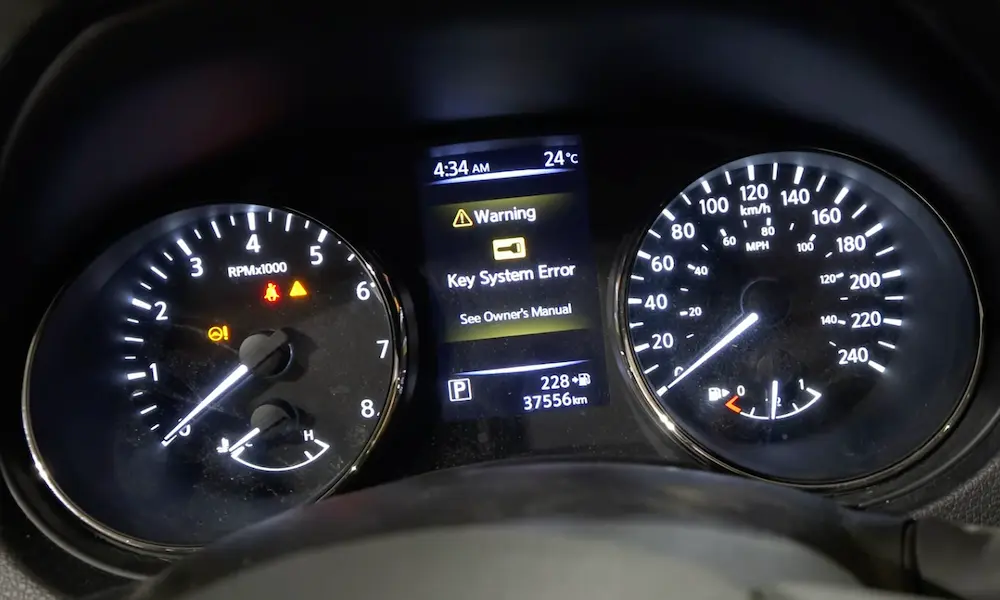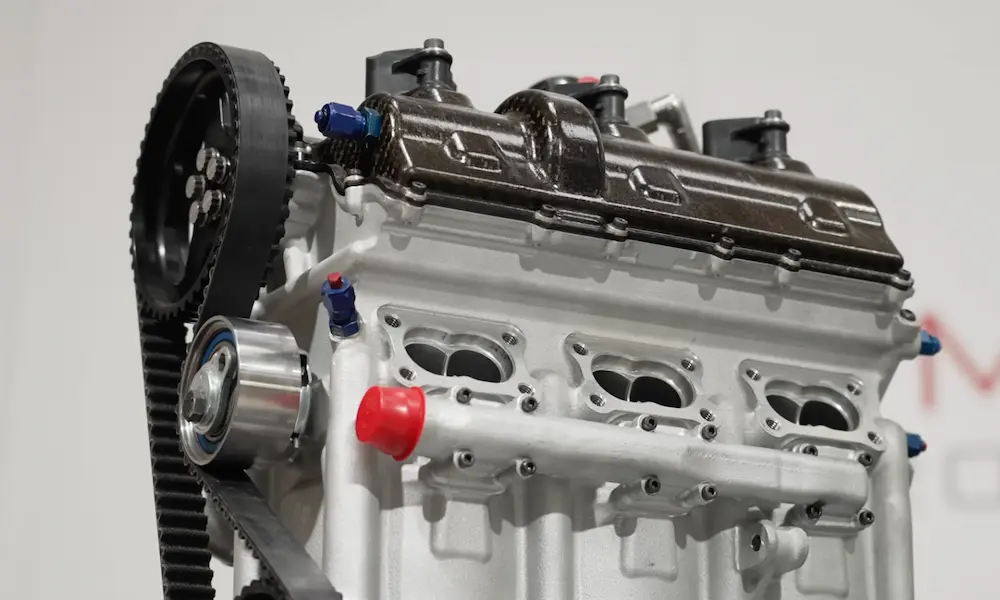Ever glanced at your dashboard only to see that pesky tire maintenance light staring back at you? You’re driving your Nissan, everything feels fine, yet that little reminder won’t quit. Don’t worry – resetting your Nissan tire maintenance light is something you can handle without a trip to the dealership.
Understanding Nissan’s Two Tire Warning Systems
Before grabbing your keys and attempting a reset, it’s important to know which light you’re dealing with. Nissan vehicles feature two separate tire-related dashboard indicators:
The Tire Pressure Monitoring System (TPMS) Light
This warning appears when your Nissan detects low pressure in one or more tires. It looks like a horseshoe with an exclamation mark inside and sometimes includes the letters “TPMS.” This system actively monitors real-time tire pressure – not just a scheduled reminder.
The TPMS light serves a crucial safety function. According to the National Highway Traffic Safety Administration, properly inflated tires improve vehicle handling, reduce stopping distances, and help prevent blowouts.
The Tire Maintenance Reminder
This is strictly a mileage-based notification that appears after you’ve driven a specific distance (typically 5,000-7,500 miles). It simply reminds you it’s time for tire rotation and inspection – not that anything is actively wrong with your tires.
The reminder appears as “Tire Maintenance Due” or similar text in your vehicle information display. Think of it like your Nissan’s way of saying, “Hey, time to show your tires some love!”
How to Reset the TPMS Light in Your Nissan
If you’ve properly inflated your tires but the TPMS light persists, try these reset methods:
Method 1: The Driving Reset
This is often the simplest approach:
- Ensure all tires (including spare, if equipped with TPMS) are properly inflated to the pressure listed on your driver’s side door jamb
- Drive your Nissan at speeds over 50 mph for about 10 minutes
- Turn your car off completely, wait at least 20 minutes
- Restart your Nissan – the TPMS light should now be gone
This method works because your TPMS needs time at higher speeds to complete its calibration cycle.
Method 2: The Pressure Cycle Reset
If the driving method doesn’t work, try this approach recommended by Nissan dealers:
- Inflate all tires to 3 PSI above the recommended pressure
- Completely deflate all tires until they’re flat
- Reinflate to the exact recommended pressure specified in your door jamb
This process essentially “reboots” the pressure sensors. Don’t forget your spare tire if it has a TPMS sensor!
Method 3: The TPMS Reset Button
Some Nissan models have a dedicated TPMS reset button:
- Locate your TPMS button (usually under the steering wheel or in the glove box)
- Turn the ignition to “ON” position (don’t start the engine)
- Press and hold the button until the TPMS light blinks three times
- Release the button and start the engine
- Drive for about 20 minutes to allow the system to recalibrate
If you can’t find the button, check your owner’s manual for its exact location in your specific Nissan model.
How to Reset the Nissan Tire Maintenance Reminder
The tire maintenance reminder requires a different reset procedure than the TPMS light. Here’s the general approach that works for most modern Nissan models:
The Dashboard Menu Method
- Turn the ignition to “ON” or start your Nissan
- Use the steering wheel buttons (usually on the left side) to navigate
- Press the right/left arrows to find “Settings”
- Press “OK” to select Settings
- Scroll down to “Maintenance”
- Press “OK”
- Scroll to “Tire”
- Press “OK”
- Select “Reset”
- Press “OK” to confirm
The maintenance reminder should now disappear from your display until the next interval.
Model-Specific Nissan Tire Maintenance Reset Instructions
Different Nissan models may have slight variations in their reset procedures. Here are specifics for popular models:
Nissan Rogue Reset Procedure (2017-2022)
- Turn on the vehicle without pressing the brake (accessory mode)
- Use steering wheel controls to clear any initial notifications
- Press the right arrow to cycle to “Settings”
- Scroll down to “Maintenance” using the up/down buttons
- Press “OK”
- Select “Tire” from the menu and press “OK”
- Select “Reset” and press “OK”
- Confirm by selecting “Yes” and pressing “OK”
For Nissan Rogue owners, this menu-based reset takes less than a minute once you’re familiar with the process.
Nissan Altima Reset Procedure (2019-2023)
- Use steering wheel controls to toggle right until reaching “Settings”
- Toggle down to “Maintenance”
- Press “OK”
- Scroll down to “Tire”
- Press “OK”
- Select “Reset” and press “OK”
- Confirm the reset when prompted
The Altima’s dashboard interface is particularly user-friendly, with clear on-screen instructions.
Nissan Qashqai/Rogue Sport Reset Procedure
- Press the button on the right side of the instrument cluster
- Navigate to “Settings”
- Press and hold to enter the menu
- Scroll to “Maintenance”
- Select “Tire”
- Choose “Reset”
Qashqai owners may need to press and hold certain buttons slightly longer than other models.
Customizing Your Tire Maintenance Reminder Interval
Did you know you can personalize how frequently your Nissan reminds you about tire maintenance? Here’s how:
- Follow the same menu navigation path used for resetting
- Instead of selecting “Reset,” look for the “Interval” or “Distance” option
- Adjust the mileage to your preferred setting (5,000 miles is standard, but you can customize)
- Press “OK” to save your settings
This feature is particularly useful if:
- You drive in harsh conditions and need more frequent rotations
- You have aftermarket tires with different rotation requirements
- Your driving style (aggressive vs. gentle) affects tire wear patterns
Troubleshooting Persistent Tire Warning Lights
If your tire warning lights keep returning after reset attempts, consider these common issues:
For Persistent TPMS Lights
- Check for flashing vs. solid light: A flashing TPMS light often indicates a sensor system problem rather than just pressure
- Inspect valve stems: Damaged valve stems can cause slow leaks
- Consider sensor batteries: TPMS sensors have batteries that typically last 5-10 years
- Temperature fluctuations: Significant temperature drops can lower tire pressure enough to trigger warnings
For Recurring Maintenance Reminders
- Incomplete reset procedure: Make sure you’re confirming the final reset prompt
- Menu navigation errors: Some models require holding buttons for specific durations
- System glitches: Occasionally, disconnecting the battery for 5-10 minutes can reset stubborn reminders
When Professional Help Might Be Needed
While most tire maintenance light resets can be handled yourself, certain situations call for professional assistance:
- Your TPMS light flashes continuously for more than a minute when starting the car
- You’ve completed all reset procedures multiple times with no success
- You hear audible warnings accompanying the light
- You notice uneven tire wear patterns despite regular rotations
Benefits of Regular Tire Maintenance Beyond Turning Off the Light
While resetting the light is satisfying, the real goal is maintaining your tires properly. Regular tire maintenance provides:
| Benefit | Impact | Typical Savings |
|---|---|---|
| Extended Tire Life | Regular rotation adds 5,000-10,000 miles to tire lifespan | $400-800 per set |
| Improved Fuel Economy | Proper inflation saves up to 3% on fuel costs | $50-100 annually |
| Enhanced Safety | Well-maintained tires reduce stopping distances | Potentially lifesaving |
| Better Handling | Even wear patterns improve cornering and stability | Improved driving experience |
| Early Problem Detection | Regular inspections catch sidewall damage early | Prevents blowouts and accidents |
Tools Needed for Proper Tire Maintenance
While resetting warning lights is important, actually maintaining your tires requires a few basic tools:
- Quality tire pressure gauge (digital for accuracy)
- Portable air compressor or inflation access
- Tread depth measurer
- Valve stem caps (these inexpensive items prevent air leaks)
- Tire rotation diagram (specific to your Nissan model)
Beyond the Reset: Preventing Future Warnings
The best way to deal with tire maintenance lights is preventing unnecessary warnings:
- Schedule regular rotations: Mark your calendar for every 5,000-7,500 miles
- Check pressure monthly: Temperature changes affect pressure readings
- Inspect tires visually: Look for bulges, cracks, or objects embedded in tread
- Clean TPMS sensors: When having tires serviced, request sensor cleaning
- Document all tire service: Keep a log of rotations, alignments and pressure adjustments
By staying proactive with tire care, you’ll see those warning lights less frequently and enjoy better performance from your Nissan.
Understanding Seasonal Tire Pressure Fluctuations
One common cause of recurring TPMS warnings is seasonal temperature changes. According to the National Highway Traffic Safety Administration, tire pressure typically drops 1-2 PSI for every 10°F decrease in temperature.
This means your perfectly inflated summer tires might trigger TPMS warnings during the first cold snap of fall. The solution? Check and adjust tire pressure:
- In the morning (before driving)
- After temperature changes of 10°F or more
- When switching between significantly different altitudes
For Nissan owners in areas with dramatic temperature shifts, seasonal pressure adjustments are essential for avoiding constant TPMS warnings.
The Technology Behind Nissan’s Tire Monitoring Systems
Nissan’s tire systems use sophisticated technology to keep you safe:
- Direct TPMS: Sensors mounted inside each tire that transmit precise pressure readings
- Battery-powered sensors: Typically last 5-10 years before needing replacement
- Central computer integration: Your Nissan’s computer analyzes pressure data constantly
- Warning thresholds: Warnings trigger when pressure drops 25% below recommended levels
Understanding this technology helps explain why proper reset procedures are important – they recalibrate the entire monitoring system.












